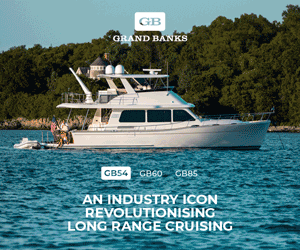In antiquity
How the world’s largest small boat museum began with a simple pursuit, preserving the heritage of Lake Como.
Written by Gerald Guetat
Photography by Henri Thibault
13 July 2021
The ancient Romans knew there was something unique about Lake Como. How the deep body of water with steep banks leaning against the sheer rock connected with the rich Lombard plains to the rest of Europe beyond the country of the Helvetes.
The Pliny family, both the Elder and the Younger, erected sumptuous villas here. The Empire, which maintained five fleets to rule the waves of the known world, had based one in the Bay of Como.
Nature knows how to make gifts, but geography always imposes itself on humans. No or few roads, tortuous paths threatened by the gully, soon developed navigation on this majestic lake. It’s not surprising that, over the centuries, tens and dozens of boatyards have settled along its banks in the service of industrious, harsh and proud populations.
The rise of boating and the establishment of villas where the rich Milanese and European gentry came to relax in the 19th century have further strengthened the expansion of nautical activities in all areas from fishing, transport, oar, sail, steam and then internal combustion engine.
Even the saga of the Riva family as boatbuilders began at Lake Como. In 1771, Daniele Riva began the line that continues to produce boats on the heights of Como.
Names such as Abbate, Cranchi, Timossi and Taroni were celebrated during the 20th century. Some could not, or would not, survive the transformation of traditions through the unstoppable advent of glass-reinforced plastic boat production.
At the turn of the 1970s, from disinterest, lack of space or willingness to turn the page on modernity, many boatyards and boat owners began to abandon their wooden boats to the weather when it was not a question of simply reducing them in bundles for the chimneys in winter.
Without this thousand-year-old setting, the decisive action of a pioneer in the preservation of the nautical heritage could not be measured to its full extent.
This is when GianAlberto Zanoletti entered the scene.
GianAlberto Zanoletti di Rozzano, who was born in 1943 and passed away in 2019, was part of a generation for which everything was possible on limitless earth.
At that time, the specialisation and labelling of an individual by their activity were not as mandatory as it is now. As someone who was a cultured gentleman – an explorer, sportsman, diver and underwater photographer – Zanoletti di Rozzano travelled the world before dedicating himself to the preservation of the nautical heritage in his homeland.
Living in both Milan and on Lake Como, as well as being someone fascinated by humanity’s relationship with nature, Zanoletti di Rozzano took the wheel of race boats, taking a world record in the SF outboard category of 1000cc in 1970.
Nothing about the cause of the boats, and those who designed and built them was foreign to him. By deciding to look after the legacy left on the shores of the lake, he first began to build his collection alone.
Then, in 1976, he founded with a handful of faithful friends the association that would ultimately birth the Museo della Barca Lariana six years later. A unique refuge for endangered species that was set up in an old silk spinning mill, and would later collect treasures of old hulls, motors, archives, drawings and more than 400 boats – a feature that made it the largest small boat museum in the world.
But Zanoletti di Rozzano could not be satisfied only sheltering a fragile nautical heritage. So, in 1987, GianAlberto Zanoletti and his peers created the Associazione scafi d’epoca e classici (ASDEC), or Vintage and Classic Boat Association Club. Its purpose was to bring together, celebrate and promote the navigation of protecting historic boats; the founding members establishing strict text to help ensure the preservation of boats for future generations.
To this day, ASDEC continues this tradition, listing a panel of specialists and trained experts to advise and guide classic boat restoration, as well as continuing its Registro Storico Nautico, a certification for boats that meet ASDEC’s criteria.
Since 1988, more than eighty meetings have been held by ASDEC, ranging from Imperia to Venice, Monaco, and even once in Paris in 2006. In July 1991, ASDEC held its first rally of motorboats at the Villa d’Este in an exceptional setting of beauty and elegance.
From year to year, the number of participants, variety of boats and the range of nationalities have evolved – the trend going undoubtedly toward a tightening around 30 registered entrants year after year.
The joy of gathering is always the same and, from the Villa d’Este, is a ritual to run towards the north of the lake, to the cape of Bellagio, an ideal opportunity to admire the splendours of the landscape.
But, after passing Bellagio to starboard, it may also be tempting to head north and follow the western shore of the lake to Pianello del Lario, the birthplace of the famous museum where it all began.
In 2014, Zanoletti di Rozzano summarised his mission on the Italian vintage boat outlet, Barche d’epoca e classiche: “As in nature, the richness of the human species comes from the variety of everything around it.
“This applies to boats. If a typology of boat disappears with its history, humanity loses a part of itself and is impoverished.”
Soon after, fate struck him with a degenerative disease while his museum was closed to the public due to the requirements of up-to-date safety standards. His son Ferdinando Zanoletti then took over decisively, establishing a foundation and launching a major renovation that saw the public reopening of the museum in 2018, whose exploration has become more fascinating than ever.
GianAlberto was able to witness this remarkable rebirth before disappearing a year later. This incredible museum, out of time and space, is dedicated to him.




































